24
Dec
Gum Chewing: Helpful or Harmful?

People have been enjoying some form of chewing gum for literally thousands of years. Although today’s versions might look a bit different from the gum that our ancestors chewed, the basics of gum have stayed pretty much the same: a soft substance that’s supposed to be chewed and never swallowed.
Whether you prefer fruity flavors, refreshing mint, spicy cinnamon, or a full three-course meal like Willy Wonka’s famous chewy treat, there is no doubt that chewing gum is a favorite treat and activity all packed into a stick or a ball.
Although almost everyone enjoys chewing gum, some people think it’s healthy and others think it’s harmful. So, which is it?
Let’s take a look at both the harmful and helpful effects of chewing gum, so you can decide for yourself.
5 Potentially Harmful Effects of Chewing Gum
1. Sugar and Cavities
Although there are sugar-free chewing gum options available, there are still several varieties that contain sugar and other sugary ingredients such as corn syrup.
The problem with chewing gum that contains sugar is that it exposes the teeth to this sugar the entire time you are chewing. Bacteria inside your mouth feast on the sugar in the chewing gum and produce acids inside your mouth that cling to your teeth, dissolve the minerals in your tooth enamel, break down the tooth enamel, and cause cavities that can lead to all sorts of serious dental health problems.
Increased sugar and bacteria in your mouth can also put you at an increased risk of developing periodontal (gum) disease, which can also lead to serious oral and general health problems.
2. Artificial Sweeteners
The obvious solution to the sugar contained in gum is to choose to chew a sugar-free variety. Unfortunately, these chewing gums replace sugar with artificial sweeteners, and these are not always safe for your health.
For example, as the body processes aspartame, levels of formaldehyde (a known carcinogen) have been shown to increase inside the body. Artificial sweeteners have also been shown to worsen symptoms in people with irritable bowel syndrome.
Additionally, many people report having negative side effects after consuming artificial sweeteners such as headaches, migraines, bad moods, and stomach aches.
3. Temporomandibular Joint (TMJ) Disorder
TMJ disorder is a painful condition that can lead to all sorts of unpleasant musculoskeletal side effects, in addition to bruxism that puts excessive wear and tear on the teeth.
It is caused by a dysfunction with the temporomandibular joints, the joints responsible for controlling your jawbone.
Chewing gum does not necessarily cause TMJ disorder, but excessive, aggressive, or lop-sided (chewing on only one side of the mouth) gum-chewing habits can lead to muscle fatigue in the jaw muscles that increase an individual’s risk of developing a TMJ disorder.
4. Excessive Wear and Tear on Teeth
Using your teeth to chew more than your food places excessive wear and tear on their surfaces. As a result, frequently chewing gum can lead to excessively worn teeth, tooth deformities, tooth sensitivity, and even weakened or broken teeth.
5. Headaches
Chewing gum frequently or for long periods of time can lead to fatigued jaw and face muscles. This fatigue and resulting muscle tension can cause jaw pain, face pain, neck pain, sinus pain, ear pain, and severe headaches.
Schedule Now
So, Is There Anything Good About Chewing Gum?
If you enjoy the occasional stick of chewing gum, don’t fret! It’s not all bad news.
Like sucking on a stone, chewing gum stimulates the salivary glands to produce saliva, and saliva helps clean your teeth and gums while remineralizing your tooth enamel.
While you chew, your salivary glands produce more saliva than normal. This washes away food debris, bacteria, sugar, and acids that might be stuck to your teeth. At the same time, the minerals like calcium and fluoride that are in your saliva work similarly to a topical fluoride treatment, helping to remineralize and strengthen your tooth enamel that has been weakened while eating.
So, chewing on a stick of gum can actually be a great alternative to brushing your teeth after a meal or snack – as long as you choose a sugar-free variety.
The Safest Way to Enjoy Chewing Gum
Since, when you eat, teeth are exposed to bacteria and acids that weaken tooth enamel, it is recommended that you wait for at least 20 to 30 minutes before brushing your teeth because brushing too soon after a meal or snack could do more harm than good.
If you want to enjoy a stick of chewing gum after a meal to freshen your breath and remove some bacteria and plaque – without exposing your teeth to the abrasives of your toothbrush and toothpaste – then you should always choose a sugar-free variety and check the ingredients to avoid aspartame if it bothers you.
Then, be sure to keep your chewing session short to protect your jaw and teeth from over-use.
To learn more about chewing gum, get a recommendation for a healthier brand, and learn more about the other habits that could help or harm your teeth, we welcome you to schedule a dental checkup at Goochland Dentistry today.








